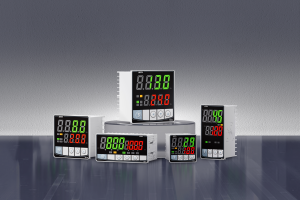What is Deadband in PID Control: A Comprehensive Guide
Learn about deadband in PID control systems, its benefits, types, and implementation. Understand how deadband improves system stability and reduces actuator wear.
1.Introduce Deadband to PID Control
Deadband is a crucial concept in PID (Proportional-Integral-Derivative) control systems. This is a region around the setpoint in which no control actions are taken. It means that small deviations are not detected by the controller. The deadband reduces unnecessary wear and adjustments on the actuators. This increases the stability and longevity of the system.
Understanding PID Control
The PID feedback system is widely used in industrial control systems. To maintain a desired output, it combines three components: proportional, integral, and derivative. The proportional component deals directly with current errors. Integral addresses past errors and Derivative predicts errors in the future based on the rate at which they change. These components work together to ensure precise, stable control.
Deadband is a form of music.
Deadband in PID is the predefined area around the setpoint that the controller will not act on. The controller must not make constant minor adjustments, which can cause excessive wear on actuators. The controller ignores small errors within the deadband and focuses instead on the more serious ones that require correcting.
There are different types of deadband
2.Deadbands can be classified into two main types:
1.
Zero-Crossing deadband: The center of the range is set at zero. This range is ignored by the controller, and it only responds when an error exceeds its limits.
2.
Non-zero crossing deadband: The setpoint isn't the center of this type, but rather upper and lower limit values. As long as error is within the limits, controllers remain inactive.
Deadband: Benefits and Use
There are several advantages to using deadband with PID controllers:
Deadbands can help extend actuator life by reducing unnecessary adjustment.
* Reduce Control System Noise - Deadbands reduce the frequency of the control action, thus reducing the noise.
Deadband improves system stability by focusing on errors that are significant.
3.PID controllers with Deadband: Implementation
Follow these steps to implement deadband on a PID Controller:
1.
Deadband range: Define the maximum acceptable distance around the setpoint that will not be controlled.
2.
Modify Control Algorithm : Include deadband logic in the PID algorithm. Check if error falls within deadband before taking any action.
3.
Deadband Code Examples: Below are a few examples of deadband code in various programming languages.
* Python:
def pid_control(setpoint, process_variable, Kp, Ki, Kd, deadband):
Error = Setpoint - Process_Variable
If abs(error), then deadband is:
Return 0
Calculate PID Terms and Control Output
# ...
* Arduino:
double pid_control(double setpoint, double process_variable, double Kp, double Ki, double Kd, double deadband) {
double error = setpoint - process_variable;
if (abs(error) < deadband) {
Return 0
}
Calculate PID Terms and Control Output
// ...
}
4.Considerations for Practical Use
Consider the following when implementing deadband:
* Selecting the Right Deadband: You should choose the deadband based on your system's specific needs. A deadband that is too large can cause insufficient control while a band that is too small can cause excessive wear on the actuator.
Deadbands can be a drawback. While they may improve the stability of a vehicle and reduce wear on it, they also slow down its response time to minor but important errors.
Test and tune: To ensure the best performance, test the system and fine-tune the value of the deadband.
Examples of Applications
The Deadband can be used to improve the performance of control systems in a variety of applications.
1.
Deadbands are used in temperature control systems to prevent the system from constantly adjusting for small temperature variations, thus reducing wear and tear on heating elements.
2.
Motor Speed Control: The deadband is used in motor speed control to avoid making frequent adjustments of speed for small deviations. This extends the life span of the motor, and improves overall stability.
5.The conclusion of the article is:
The deadband feature is an important part of PID systems. It helps to reduce the number of unnecessary adjustments and noise while improving system stability. Understanding and using deadband correctly can improve the longevity and performance of your control system.























